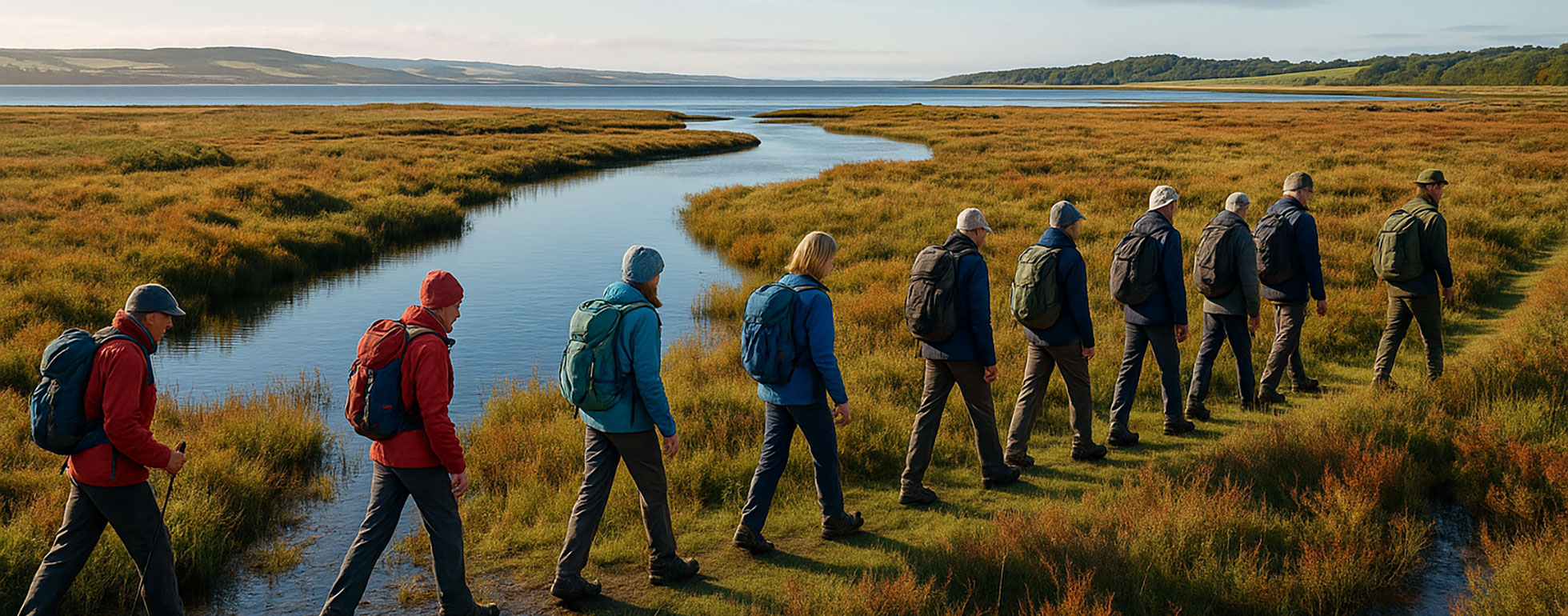Before Roads, Before Romans
Long before Inverness became the “Gateway to the Highlands,” Merkinch was a place of mud, reeds, and mystery. Prehistoric folk might’ve wandered its marshy edges, following the tides for fish or shelter. Picture it: no bridges, no boots, just damp feet and determination. The kind of resilience only Highland weather can breed.
Archaeologists reckon the area’s been quietly shaping human lives for thousands of years, though, back then, no one was checking their phone signal or worrying about where to park the car.
Merchants, Nets, and the Smell of Fish
Fast forward a few millennia and Merkinch started smelling distinctly... industrious. Fishing, curing, tanning: the sort of work that left the air thick and the river oily. Locals got on with it, as Highlanders do. This was an era of elbow grease, not wellness retreats.
Old-timers still talk about the “fish works” and the canal barges, the ones that creaked like tired bones on cold mornings. It wasn’t pretty, but it was honest. And in its own way, it kept the place alive.
The Industrial Heyday and Its Hangover
By the 19th century, Merkinch had a new rhythm: ironworks, shipyards, and warehouses filled the skyline. The rail line came through, and with it, opportunity. If you drive through the area today, it’s hard to imagine smoke stacks where the willows now grow. Harder still to imagine that this landscape once defined Inverness’s industrial backbone.
Then came decline. Industry packed up, nature crept back in, and locals were left with the echo of hard work and the occasional rusted bolt buried in the grass. A few relics still poke through - iron, timber, the ghosts of labour. The kind of details you only notice when you slow down, pull over, and actually look.
Wild Again: The Comeback Nobody Saw Coming
Then something remarkable happened. Nature, with its stubborn streak, took over. What industry abandoned, the wild reclaimed. Saltmarsh grasses sprouted where engines once roared. Otters returned. Herons set up post like security guards on stilts.
It’s a proper redemption arc. And walking through today’s Merkinch Nature Reserve feels like stepping into a secret garden with a Glaswegian accent: rough around the edges but full of charm. You’ll spot joggers, twitchers, families, and the occasional visitor who came for “a quick look” and stayed two hours too long.
What It Feels Like Now
Modern Merkinch is that rare mix of grit and grace. It’s one of those places that reminds you Scotland’s beauty isn’t always dramatic cliffs and castle postcards. Sometimes it’s a wetland behind a housing scheme, quietly proving that wildness doesn’t care about postcodes.
There’s a bench by the old canal path where you can watch the tide inch in - slow, deliberate, unbothered. A heron might glide past. A local might nod in greeting. The whole scene feels oddly grounding. Like the place knows more than it lets on.
The Legacy That Stays With You
Merkinch isn’t famous, and that’s half the point. It’s lived through millennia of human interference and still manages to thrive. Its story: from ancient marsh to industrial hub to nature reserve; is a Scottish lesson in persistence.
Driving away, you’ll probably roll the window down just to get one last lungful of sea air. The kind that tastes like salt, iron, and something older still. You can’t bottle that: though someone, somewhere, will probably try.
